Published:
Author: Antonio Maria Guerra
Renaissance Banquets
FOOD AND POWER
Since ancient times, rich and powerful people organize magnificent events, rich in delicious specialties, to impress their guests and to gain their respect. This proves that food can be used as an effective tool to show the belonging to the dominant social class. The chef and master of ceremonies Francois Vatel is particularly interesting from this point of view: he was, in fact, one of the most skilled architects of incredible renaissance banquets during the Seventeenth Century.

Renaissance banquets: magnificence at the table.
In Europe, during the Renaissance and the Baroque, banquets reached such a level of magnificence and complexity to look like theatrical representations, in the belief that exquisite delicacies, if served in the right setting, could gain additional flavor and transmit unique sensations. 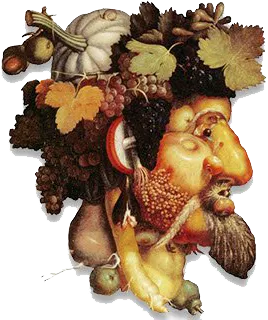
The spectacles accompanying food were so elaborate to require a proper director: the ‘master of ceremonies’ was appointed with the difficult task of choosing the right timing for courses, songs, dances, wines and amazing special effects.
Many of the greatest artists and scientists of the time, were hired to create incredible works of art and machinery to be used during these feasts: the goal was to leave guests amazed and delighted. Their clients were the richest and most powerful members of the society, sparing no expense to celebrate themselves.
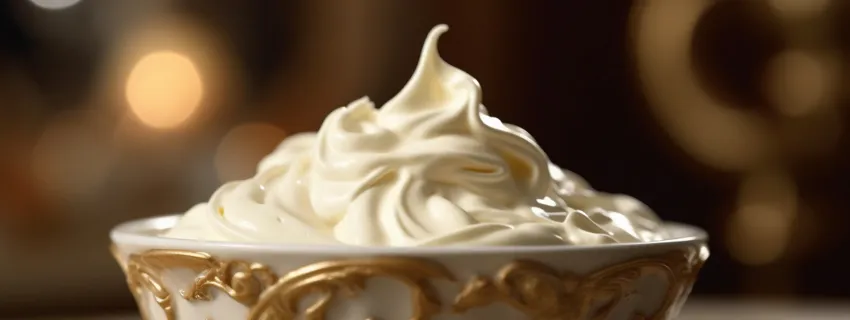
Chantilly: the cream by Vatel.
Chantilly Cream is made with whipped cream, usually sweetened and flavored. Its invention is often attributed to Vatel. Many think that he prepared this delicious dessert for the first time in 1671, on the occasion of a banquet at the Chateau of Chantilly (*1).
Read more
Recent studies claim that the original recipe could be much older: same ancient cookbooks prove that it was well known at least one century before, with the name ‘neige de lait’ (‘milk snow’).
Note:
*1: Hence the name ‘Chantilly’.


Francois Vatel, much more than a cook: great architect of Renaissance banquets.
Francois Vatel spent most of his life at the service of the richest nobles of France. 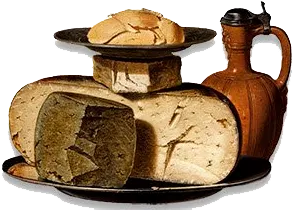 He was a great cook, but quite often this was not enough: his employers were bored and capricious people, always asking for something new and unexpected. Food, although delicious, was just trivial to them: for this reason he had to transcend his profession, becoming the operator of a complex machine that could transform the ‘simple’ act of eating into an incredible experience. His banquets were meant to instill awe and admiration in the guests: to achieve this effect, everything needed to work perfectly.
He was a great cook, but quite often this was not enough: his employers were bored and capricious people, always asking for something new and unexpected. Food, although delicious, was just trivial to them: for this reason he had to transcend his profession, becoming the operator of a complex machine that could transform the ‘simple’ act of eating into an incredible experience. His banquets were meant to instill awe and admiration in the guests: to achieve this effect, everything needed to work perfectly.
Failure was not an option: something that Vatel learned the hard way.
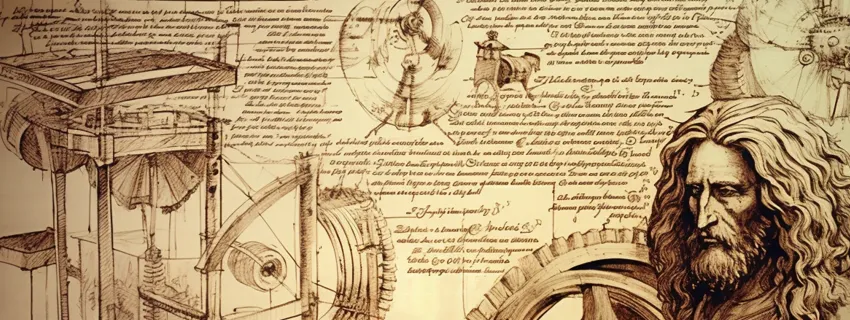
‘Special effects’ by Leonardo.
During the Renaissance and the Baroque, many artists and scientists used their talents to transform the banquets commissioned by the wealthiest nobility into unique experiences.
Read more
In 1490, Leonardo Da Vinci designed an incredible mythological setting for the event celebrating the wedding between Isabella of Aragon (*1) and Gian Galeazzo Sforza. The lucky guests of the ‘Paradise Feast’ (‘Festa del Paradiso’), were amazed by the splendid special effects, the fruit of his great technological discoveries.
Note:
*1: According to recent studies, this noblewoman inspired the most famous ‘Mona Lisa’.
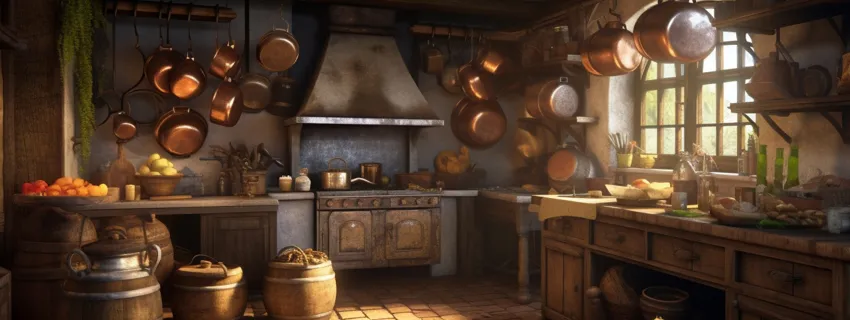

Francois Vatel: a life dedicated to renaissance banquets.
The life of Francois Vatel is very interesting: some of the events occurred during it, are worth mentioning.
The early years.
The information about his early years are uncertain and incomplete. Many historians think that he was born in Tournai (Belgium) in 1631, from a Swiss family: his original name was, in fact, Fritz Karl Watel. At the age of fifteen, instead of choosing the same job as his father, he became an apprentice chef, showing at once considerable skills.
Read more
At the service of Fouchet. Thanks to these skills, the young Francois was soon employed as an assistant in the kitchen of Nicolas Fouquet, Superintendent of Finance of the Kingdom of France. This experience was fundamental for his training: thanks to it, he understood the great importance of food presentation.
Thanks to these skills, the young Francois was soon employed as an assistant in the kitchen of Nicolas Fouquet, Superintendent of Finance of the Kingdom of France. This experience was fundamental for his training: thanks to it, he understood the great importance of food presentation.
The chronicles of the time report that during the banquets ordered by the powerful statesman, delicious preparations were often served on gold plates, in the belief that this could enrich their taste and increase the prestige of the host.
The inauguration of Vaux-le-Vicomte castle.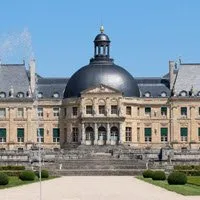 In August 1661, Vatel was appointed with the task of organizing the inauguration of the Vaux-le-Vicomte Castle. The King himself, Louis XIV, was invited to this important event. The celebration was so splendid and successful to make the monarch jealous, ruining his already difficult relations with Fouchet. Not surprisingly, a few months later, the ambitious politician was arrested (*1) under the accusation of embezzlement. Fearing to be involved, Vatel fled to England. It’s possible to say that his great skill costed him his job.
In August 1661, Vatel was appointed with the task of organizing the inauguration of the Vaux-le-Vicomte Castle. The King himself, Louis XIV, was invited to this important event. The celebration was so splendid and successful to make the monarch jealous, ruining his already difficult relations with Fouchet. Not surprisingly, a few months later, the ambitious politician was arrested (*1) under the accusation of embezzlement. Fearing to be involved, Vatel fled to England. It’s possible to say that his great skill costed him his job.
At the service of the Prince of Condé. As a matter of fact, his ability had been noticed at court and quite soon he could come back to France where, in 1633, he was hired by the Prince of Condè as ‘contrôleur général de la Bouche’ (catering manager) at the Château de Chantilly. Thanks to his passion and dedication, he could organize all the sumptuous banquets that the Prince frequently ordered.
As a matter of fact, his ability had been noticed at court and quite soon he could come back to France where, in 1633, he was hired by the Prince of Condè as ‘contrôleur général de la Bouche’ (catering manager) at the Château de Chantilly. Thanks to his passion and dedication, he could organize all the sumptuous banquets that the Prince frequently ordered.
Note:
*1: The arrest was carried out by D’Artagnan, the historical character made famous by Alexandre Dumas in his novel ‘The Three Musketeers’.
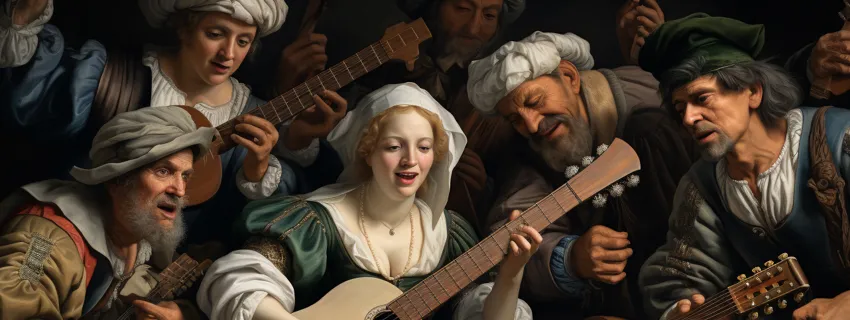
Music for the renaissance banquets.
Music by Morricone, Handel and Monteverdi are probably the best choice to accompany the reading of this article:

The last renaissance banquet by Vatel.
s already explained in one of the previous paragraphs, during the Renaissance and the Baroque, banquets were something similar to complex machines. The temporary ‘jamming’ of one of these machines caused the premature death of Vatel.
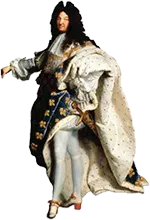 In 1671 the Prince of Conde decided to organize a magnificent event at the Castle of Chantilly (*1) to get back into the good graces of Louis XIV (‘The Sun King’).
In 1671 the Prince of Conde decided to organize a magnificent event at the Castle of Chantilly (*1) to get back into the good graces of Louis XIV (‘The Sun King’).
The monarch and great part of the court of Versailles were invited. Hundreds of people had to be accommodated, fed and entertained for three days and three nights, from the 23rd to the 25th of April (Thursday to Saturday). An extremely difficult task, requiring great competence and expertise.
The Prince invested a huge amount of money in the event that could determine his future, entrusting its realization to Vatel, on whose shoulders he placed a great burden.
Read more
During the magnificent banquets, the heart of the festivities, extremely refined foods were served, accompanied by spectacles, music and incredible special effects. Apart from some minor problems, not depending on Vatel (*2), everything seemed to go well until the fish needed to prepare the dinner of Friday the 24th (day of Lent), didn’t arrive because of transportation problems. 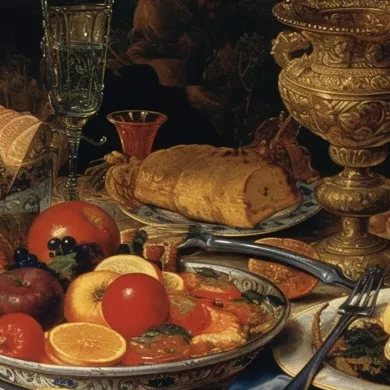 This was too much to bear for the cook: the poor Francois, stressed by too much work and too many sleepless nights, fell into a deep state of depression. Thinking that his honor was compromised, he went to his room, fixed a sword to the door, and committed suicide by stabbing himself. Ironically, a few minutes later the long-awaited fish finally arrived. His death was kept a secret so as not to disturb the guests.
This was too much to bear for the cook: the poor Francois, stressed by too much work and too many sleepless nights, fell into a deep state of depression. Thinking that his honor was compromised, he went to his room, fixed a sword to the door, and committed suicide by stabbing himself. Ironically, a few minutes later the long-awaited fish finally arrived. His death was kept a secret so as not to disturb the guests.
In the end, the feast was a great success and the Prince gained the favor of Louis XIV.
The work of Vatel not only shows that food can be used as an effective instrument of power, but is also useful to understand the true essence of a historical period well represented by its sumptuous banquets.
Notes:
*1: The castle, recently renovated, was at the peak of its splendor;
*2: For example, the guests could not enjoy the expensive fireworks because of fog;
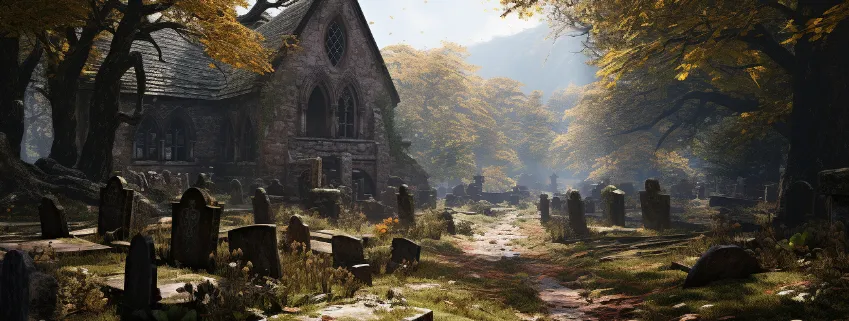
The tomb of Vatel.
Even if suicide was considered a grave sin by the Church, the body of Vatel was buried in the cemetery of Vineuil-Saint-Firmin (*1), instead of unconsecrated ground.
Read more
Legend wants that this was an exception, due to the intercession of the King of France, a great admirer of the cook.
Note:
*1: Vineuil-Saint-Firmin is a small village in northern France.
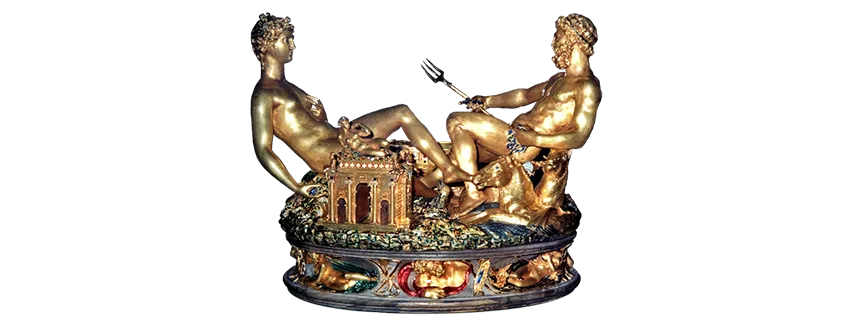
The Cellini's salt cellar.
The Cellini Salt Cellar, a beautiful object created to adorn the dinner table of a King, summarizes the essence of the Renaissance banquets.
Read more
In 1543, the versatile Italian artist Benvenuto Cellini created a very special salt cellar for Francis I, King of France.
Even if this sculpture is quite small, it’s considered one of his most important works. The masterpiece, made of gold, enamel and ivory, represents two figures placed one in front of the other: a man holding a trident (probably Neptune), symbolizing the Sea, and a beautiful woman, symbolizing the Earth.

The places of Francois Vatel and renaissance banquets.
Two places places were particularly important in the life of Francois Vatel: two magnificent castles, both located in northern France, not far from Paris.
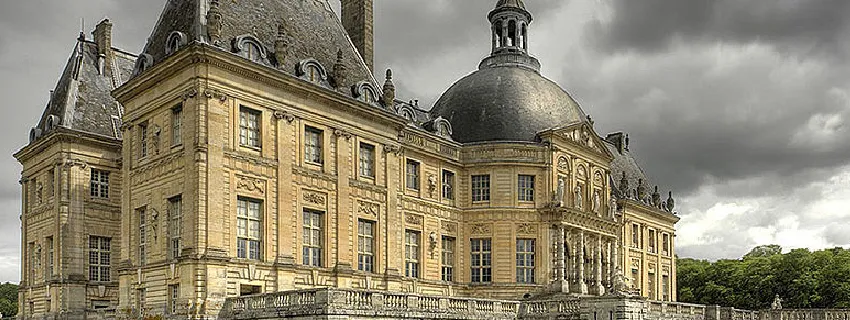
The castle of Vaux-le-Vicomte.
The castle is located about fifty kilometers south of Paris, in the region of Ile-de-France. Its construction was ordered by Nicolas Fouchet, a powerful official of Louis XIV. He entrusted this task to the same architects who later built the famous Palace of Versailles.
Read more
In five years they created a jewel, surrounded by the most beautiful French garden of the time. In 1661 this garden hosted the inauguration event, organized by Vatel. It was so magnificent to arouse the envy of many, including that of the King: a bad feeling that caused the ruin of Fouchet.
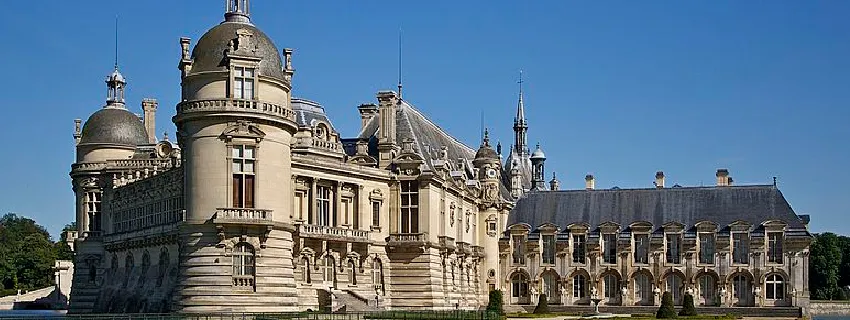
The Chateau of Chantilly.
The castle was built in the same place where was previously located a medieval fortress. Its construction started in 1386 and finished in 1394. Over the centuries, the original structure was renovated several times.
Read more
In 1664 it became the residence of the Prince of Condè: the nobleman, determined to overcome the beauty of Versailles, enriched its park with small artificial lakes, fountains and gardens. In 1671, this splendid setting hosted the last banquet organized by Vatel. During the French Revolution the castle was destroyed. It was then rebuilt in 1882 by the Duke of Aumale.
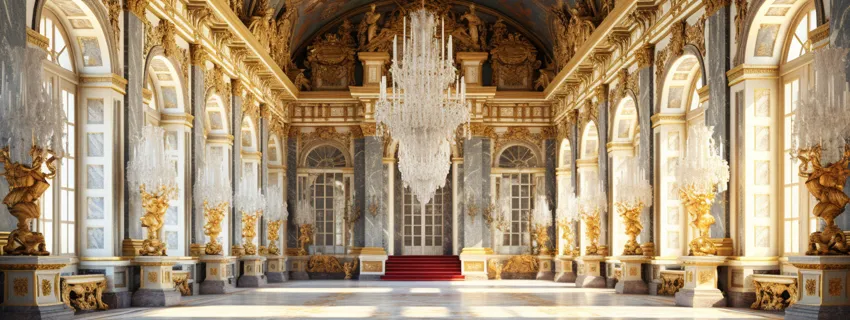
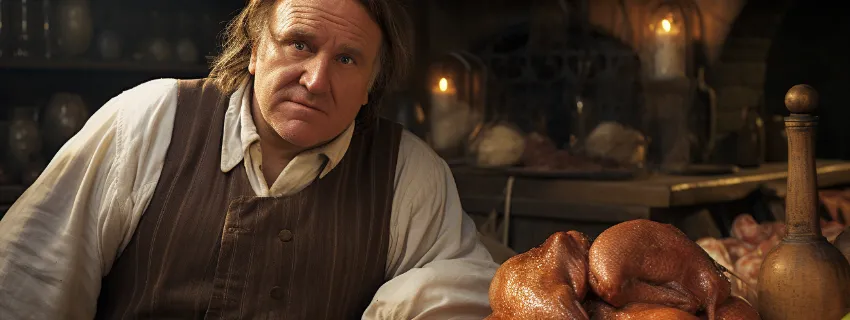
Vatel, the movie.
In the year 2000 Roland Joffé directed ‘Vatel’: a movie Masterfully played by the famous actor Gerard Depardieu, showing the last days of life of the famous chef and the pomp of Renaissance banquets.
Copyright information.
The images displayed in this page belong to WebFoodCulture, with the exception of:
Public Domain images
- Portrait of the Prince of Condé, ‘Le Grand Condé’, XVIII Cent. (Wikipedia Link) {PD-Art} {PD-US};
- Luigi XIV, Hyacinthe Rigaud, 1701 (Wikipedia Link) {PD-Art} {PD-US};
- Castle of Chantilly, 2005, photo by Patik / Ellsass (Wikipedia Link);
Creative Commons images
- Castle of Vaux-le-Vicomte, photo by Eric Pouhier (Wikipedia Link);
- Castle of Chantilly, phptp by Jebulon (Wikipedia Link);
- Saliera, Benvenuto Cellini, photo by Jerzy Strzelecki (Wikipedia Link);
